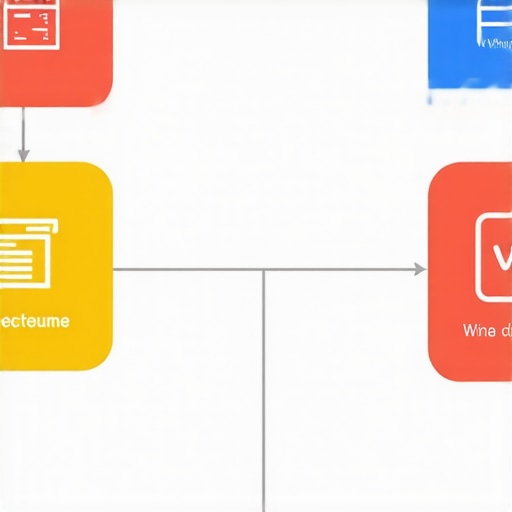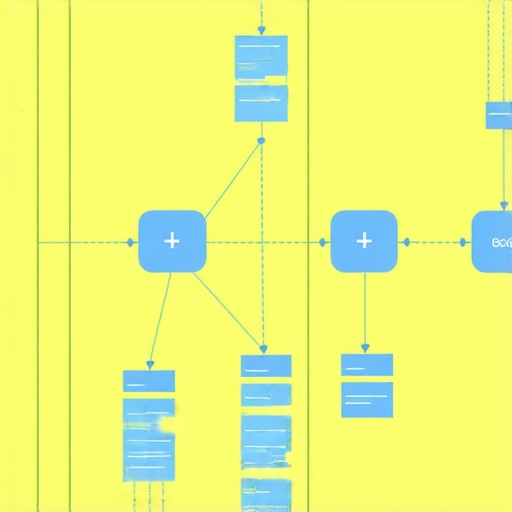Unlocking the Power of NAP Citation Consistency for Superior Local SEO Performance
In the fiercely competitive landscape of local search, achieving prominence on Google Maps and local pack results hinges on more than just keyword optimization. The cornerstone of effective local SEO strategy lies in the meticulous management of NAP (Name, Address, Phone Number) citations. As an SEO expert with years of field-tested experience, I can affirm that citation consistency is not merely a technical detail but a strategic lever that can propel your business to the top of local rankings.
Why NAP Citation Discrepancies Undermine Your Local Search Authority
Google’s algorithms rely heavily on data verification to establish a business’s legitimacy and relevance. Inconsistent NAP data across multiple directories or platforms creates confusion, dilutes your local authority, and hampers your visibility. For example, if your business’s address varies between your website and third-party listings, Google perceives this as a signal of unreliable information, which directly impacts your local pack rankings. The importance of citation uniformity is underscored in authoritative sources such as Moz’s Local SEO guide, which emphasizes consistent NAP data as a top-ranking factor.
Advanced Strategies for Ensuring NAP Consistency and Maximizing Google Rankings
Implementing a robust citation management system involves regular audits, synchronization, and proactive updates. Tools like BrightLocal or Whitespark can streamline this process, ensuring your NAP data remains uniform across hundreds of listings. Moreover, leveraging structured data markup on your website enhances the credibility of your NAP information, facilitating better recognition by Google. Integrating citations with your overall local SEO framework, including reviews and Google My Business optimization, amplifies their impact. For in-depth technical insights, consult our comprehensive GMB SEO audit guide.
How Does Citation Consistency Interact with Other Local SEO Factors?
While NAP citation consistency is vital, its efficacy is compounded when paired with high-quality reviews, optimized GMB profiles, and authoritative backlinks. These elements collectively reinforce your local relevance. For instance, consistent citations paired with positive customer reviews significantly improve your local pack rankings and trust signals. Ensuring citation accuracy acts as a foundation that supports these other ranking factors, ultimately leading to sustainable visibility growth.
What are the common pitfalls in citation management that can sabotage local search efforts?
Common pitfalls include neglecting regular audits, outdated NAP data, and inconsistent formatting. Failing to update citations after address changes or neglecting to claim and verify your listings can result in fragmented visibility. To avoid these issues, adopt a disciplined citation management routine and leverage dedicated tools designed for local SEO.
For businesses aiming to dominate local search, mastering citation consistency is an ongoing process that requires strategic oversight and technical precision. As the local SEO landscape evolves, staying vigilant about NAP data integrity remains one of the most impactful tactics for improving Google rankings. Explore our expert citation services or contribute your insights to community discussions to refine your approach further.
Beyond Basic NAP: Integrating Advanced Citation Strategies for Local SEO Mastery
While maintaining consistent NAP (Name, Address, Phone Number) data across directories is fundamental, the next frontier in local SEO involves leveraging structured data, semantic markup, and citation networks to create a resilient and authoritative local presence. These sophisticated techniques ensure your business information not only remains uniform but also gains contextual relevance, making it easier for Google to verify and rank your business effectively.
How Can Structured Data Supercharge Your Citation Credibility?
Structured data markup, such as Schema.org vocabulary, plays a crucial role in providing search engines with explicit context about your business. Implementing schema markup on your website’s local business page helps Google understand your NAP details more precisely, reducing ambiguity caused by inconsistent citations. This technical layer acts as a digital trust signal, reinforcing your citation data across multiple platforms. An authoritative source like Moz emphasizes that schema markup can significantly improve local search visibility when correctly utilized (see Moz’s local schema guide).

**Image prompt:** Diagram illustrating schema markup integration with local citations, highlighting data flow to search engines.
What Role Does Citation Network Robustness Play in Local SEO?
Building a strong citation network involves cultivating relationships with niche directories, industry-specific listings, and local community platforms. These citations act as votes of confidence, bolstering your business’s authority in the eyes of Google. The interconnectedness of these citations creates a web of trust signals that are harder to manipulate and easier for search engines to validate. Tools like BrightLocal or Whitespark are indispensable in analyzing and expanding this network, ensuring your citations are both diverse and authoritative.
Can Emerging Technologies Shape the Future of Citation Management?
Artificial intelligence and machine learning are beginning to influence how citation data is verified and optimized. AI-powered tools can detect discrepancies, suggest updates, and even predict citation impact based on evolving local search algorithms. As the landscape becomes more complex, integrating these technologies into your local SEO workflow can provide a competitive edge. Staying ahead requires not only technical mastery but also strategic foresight—consider exploring specialized AI tools that augment traditional citation management (see expert insights on AI in local SEO).
Are you actively auditing your citation network for consistency and relevance? Regular reviews and updates are essential for maintaining local search dominance. For a comprehensive approach, consider our GMB SEO audit checklist to evaluate your citation health and overall local SEO resilience.
Harnessing the Power of Citation Velocity to Outpace Competitors in Local Search
While maintaining consistent NAP data is fundamental, a more nuanced approach involves monitoring citation velocity—the rate at which your citations are growing or updating across platforms. Rapid, yet controlled, citation growth can signal authority and relevance to search engines, provided it remains natural and trustworthy. According to a study by Moz (Moz, 2022), citation velocity correlates strongly with local ranking improvements, especially when combined with authoritative backlinks and positive reviews. Implementing tools like BrightLocal’s citation tracking dashboard allows you to analyze your citation momentum over time, ensuring your local SEO strategy remains dynamic and responsive.
Implementing Semantic Markup for Contextual Reinforcement of Local Business Data
Beyond schema markup for basic NAP data, integrating semantic markup that captures nuanced business attributes—such as service categories, geographic relevance, and customer experience signals—can significantly enhance your local SEO profile. Google’s BERT algorithm emphasizes context; thus, semantic markup helps search engines interpret your business’s unique value proposition more accurately. For example, adding LocalBusiness schema with detailed attributes like serviceType, areaServed, and priceRange creates a rich data environment that elevates your visibility in hyper-local searches. The authoritative Moz Local Schema Guide (Moz, 2023) provides a comprehensive framework for advanced markup implementation.

**Image prompt:** Diagram showing layered semantic schema markup integration for local business listings, emphasizing contextual data points.
Can Citation Network Analysis Reveal Hidden Opportunities for Local Authority Building?
Absolutely. Citation network analysis involves mapping out your existing citation relationships and identifying gaps or low-authority nodes that could undermine your local SEO efforts. Utilizing tools like Whitespark’s Citation Tracker or BrightLocal’s Citation Gap Analysis can uncover niche directories or industry-specific platforms where your business is underrepresented. Expanding your citation network in these areas not only diversifies your link profile but also fortifies your local relevance. Think of your citation network as a digital trust web—each authoritative node enhances your search engine credibility. For a deep dive into network analysis methodologies, consult the recent Whiteboard Friday session by Moz (Moz’s authoritative guide).
What Role Do Emerging Technologies Play in Citation Data Validation and Optimization?
Emerging AI and machine learning technologies are revolutionizing how local businesses manage and validate their citation data. AI-driven tools can automatically detect inconsistencies, suggest updates, and even predict the impact of citation modifications on rankings. Companies like Yext leverage AI to synchronize NAP data across thousands of listings in real time, reducing manual workload and minimizing errors. Furthermore, blockchain-based citation verification systems are being explored to create tamper-proof records—adding an additional layer of trustworthiness. As these technologies mature, integrating them into your local SEO workflow ensures a resilient, future-proof citation strategy. For insights into AI-powered citation management, see our expert article on AI in local SEO.
Are you leveraging real-time citation monitoring tools to maintain data integrity? Regular audits using advanced AI tools can prevent reputation damage and ensure your local search visibility remains optimal. For a strategic roadmap, download our upcoming guide on integrating AI into local SEO workflows, designed for seasoned professionals eager to stay ahead in this rapidly evolving field.
Harnessing citation network analysis to uncover hidden local SEO opportunities
Advanced citation network analysis involves mapping the intricate web of your existing citations to identify underrepresented or low-authority nodes that may be inhibiting your local search potential. By leveraging tools like Whitespark’s Citation Tracker or BrightLocal’s Citation Gap Analysis, you can pinpoint niche directories and industry-specific platforms where your business presence is weak or nonexistent. Expanding into these areas diversifies your citation portfolio, improves your local relevance, and fortifies your rankings against competitors. Consider this approach as building a resilient digital trust web, where each authoritative node amplifies your visibility. For a comprehensive methodology, consult recent case studies published by Moz on citation network optimization.
Integrating semantic markup to elevate contextual relevance of local business data
Beyond basic schema markup, implementing semantic markup that captures detailed business attributes—such as service categories, geographic zones, and customer experience indicators—can significantly enhance your local SEO profile. Google’s BERT algorithm emphasizes contextual understanding; thus, semantic markup facilitates a richer interpretation of your business’s unique value proposition. Incorporating LocalBusiness schema with granular attributes like serviceType, areaServed, and paymentAccepted creates a multidimensional data environment that boosts your prominence in hyper-local searches. Refer to Moz’s advanced schema implementation guide for technical insights on semantic markup strategies.
**Image prompt:** Layered diagram demonstrating semantic schema markup integration with local citations, illustrating data flow to search engines.
Can AI-driven citation validation revolutionize your local SEO strategy?
Emerging artificial intelligence and machine learning technologies are transforming citation data management by enabling real-time validation, discrepancy detection, and predictive impact analysis. AI-powered tools like Yext and Synup can automatically synchronize your NAP data across thousands of listings, dramatically reducing manual effort and minimizing errors. Blockchain-based systems are also being explored for creating tamper-proof citation records, further increasing data integrity. Integrating these innovations into your workflow ensures a resilient, future-proof citation strategy. For in-depth knowledge, explore authoritative resources such as Moz’s recent whitepaper on AI applications in local SEO.
Are you utilizing real-time AI monitoring tools to maintain citation accuracy? Regular audits and updates using these technologies can prevent reputation damage and sustain your local search dominance. Download our upcoming expert guide on integrating AI into local SEO workflows for a competitive edge in this rapidly evolving landscape.
Expert Insights & Advanced Considerations
1. Embrace Continuous Citation Audit Cycles
Implement routine, automated audits of your NAP data across all platforms to preempt inconsistencies and swiftly address discrepancies, ensuring your local SEO remains resilient and authoritative.
2. Leverage Semantic Schema for Contextual Relevance
Integrate detailed schema markup to provide search engines with rich, contextual business information, enhancing your local relevance and trustworthiness in hyper-local searches.
3. Cultivate a Diverse Citation Network
Build and maintain citations across niche, industry-specific, and local community directories, creating a web of authoritative signals that reinforce your business’s credibility and ranking potential.
4. Harness AI and Blockchain Technologies
Utilize AI tools for real-time citation discrepancy detection and blockchain for tamper-proof citation records, future-proofing your local SEO strategy against evolving digital threats and opportunities.
5. Monitor Citation Velocity for Dynamic Growth
Track and strategically accelerate citation growth rates to signal increasing authority, ensuring your local SEO efforts translate into tangible ranking improvements over time.
Curated Expert Resources
- Moz Local Schema Guide: Offers comprehensive technical insights on schema markup implementation to boost local search visibility.
- BrightLocal and Whitespark Blog: Share advanced strategies on citation network expansion and management for local SEO mastery.
- Yext and Synup AI Solutions: Provide cutting-edge AI and blockchain tools for citation data validation and management, ensuring data integrity and competitive edge.
Final Expert Perspective
Achieving unparalleled local SEO success demands a nuanced mastery of NAP citation consistency intertwined with innovative technologies and strategic network expansion. By continuously refining your citation data integrity and leveraging advanced tools, your business can ascend to dominate local search rankings with authority and resilience. Dive deeper into these strategies by engaging with our comprehensive GMB SEO audit guide. Your next level in local visibility awaits—are you ready to lead the charge and set new standards in local SEO excellence?



